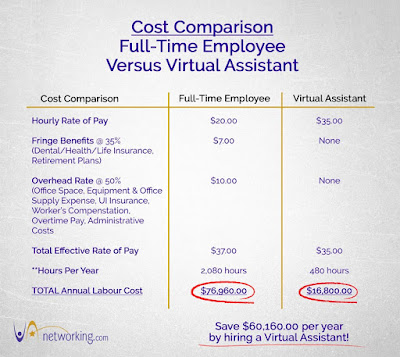5 Facebook Fan Page Problems & Fixs
Twitter, Google Plus and Facebook are probably the top three social media sites that every blogger should be on right now. And even though the first two have millions of users under their belt and are great lead generation tools, there really is no other network as powerful as Facebook.
Just try to think who of your friends doesn’t have a Facebook account! That is the reason why every business and every blog should have a Facebook fan page.
If you haven’t yet created one for your blog, you are missing out on a huge potential audience, high engagement levels and targeted traffic. But even if you have one, there are no guarantees. The fact is most fan pages will remain unnoticed and won’t ever break the hundred likes barrier. Getting people to click that elusive “Like” button isn’t as easy as it sounds. And even if you have the fans, generating likes, comments and ultimately Facebook traffic has its pitfalls. The following post is all about those pitfalls. In the below paragraphs you will find five of the biggest reasons why people might decide your Facebook page isn’t worth a visit and of course tips to help you fix the problem areas! Let’s get started:
1. You Don’t Have the Likes
That’s undoubtedly the key ingredient that you need in order to convince people to like you. Unfortunately it’s a paradox that doesn’t quite work in your favor:
In order to get more people liking you, you need to have likes in the first place. That is exactly the reason why building your fanbase from 0 to 100 likes is tougher than reaching say 500 fans once you’ve gotten those initial 100 likes. So how do you get started? Well you spread the word!
Here are some simple steps to help you:
Insert a fan page box UNDER your posts – It’s quite common to see those in the sidebars, but they are far more effective placed under the posts. That way they work as a call to action. You basically tell people “Did you enjoy my article? Then why not like me on Facebook to stay in touch!”
Share your Facebook posts on Twitter – Whenever you publish something on your fan page, click on its date header to open it in its own URL and share your post using that link. Now people will first be directed to your fan page, giving you the chance to get some of your Twitter followers to click “Like”
Tell Your Twitter followers – Don’t be scared to promote your fan page on Twitter once or twice per week. Unlike the previous approach, here you simply point people to your page with a message along the lines of “Enjoying my tweets? You might want to take a look at my Facebook page!”. You should create 3-4 different variations, so that you don’t post the same message over and over.
Use the
Facebook Page Promoter Lightbox – A very neat WordPress plugin, that works as a pop-over like box. As with all pop-over plugins, that is far more effective than its sidebar alternative. Thanks to the plugin, I’ve generated over 250 new likes in just three weeks.
Write an article about Facebook – Why not let people know you’ve started working on getting Facebook traffic and promoting your fan page! In the post you can provide readers with tips or reasons why they should be on Facebook. That is a great opportunity to tell them about your own page and show them some of the techniques you are following.
 2. People Aren’t Talking About It
2. People Aren’t Talking About It
Although getting likes does take time, it’s straightforward – you just need to start promoting your fan page. There however is another metric, which might be a bit more difficult to understand. What I am referring to is the “Talking About This” number. That one is displayed just below the cover photo and the title of your page.
First, what does “Talking about this” describe?
Well it is basically the number of unique Facebook users, who have interacted in one way or another with your fan page in the last seven days. Likes, comments, mentions and shares all count as interaction. So with that in mind, we can easily assume that if a page has thousands of likes yet very few people talking about it, then something is wrong. A possible reason for that might be that the page isn’t being updated. Another reason might be that the stories aren’t getting any engagement in the form of likes and comments.
So, how do you increase the “Talking About This” number? Here are some guidelines to help you:
Ramp up the frequency – You can’t expect to get good results if you post a story once every two weeks. Try to share something with your fans at least four or five times per week!
Share different types of content – You need to spice things up. One day you could post a funny picture, the other day you can ask a question, then you could post a quote or why not a did-you-know kind of post with no links in it.
Craft a good call to action – The description you write holds a huge importance for whether or not people will click on your link, like your story or leave a comment. You can be as direct as saying “Like if you agree” when you post a quote for instance, or you could say something along the lines of “I would appreciate to hear your thoughts!”.
3. You Care About Getting Clicks Only

I really hate landing on a fan page, where the only thing I see are links to articles from the blog that the page belongs to. Not only that it feels rather spammy, but it’s also boring.Even if we assume the content you share is actually worth reading, this still doesn’t mean you should use your Facebook page solely as a promotion platform. Content might be useful, but the real problem is it is often “emotionless”. Sharing practical tips is great but it can’t produce an emotional attachment so to say. Additionally people also need a couple of minutes – first to actually read the post and then to decide if it’s good. That is why the stories that make an immediate connection with the viewer are in most cases images. You see them and you immediately act upon them, especially if they include a thought you can relate to or a funny story about the things you like or situations you’ve fallen into. In the end your desire to get clicks will end up dragging your page’s popularity down and hence returning less traffic for you. Another problem is that you will be getting very few likes (images for instance tend to receive double the likes of a link to an article), which definitely won’t make your Facebook stream look trustworthy.
4. It Feels Like You Aren’t There
One great way to create a welcoming feeling among your new fans is by simply showing them “you are alive”. If you have a fan page about your blog, you should also emphasize on the blogger behind everything. The idea is to add a small pinch of your personality to the mix.
Sounds simple in theory, but how do you do it in practice?
Not only ask, but reply – in a real world situation where you ask a question, it is quite obvious that you will also wait for an answer and then give your standpoint once again. It’s the same here. Whenever you ask your fans something, don’t forget to observe the answers and reply back (by mentioning the person by name, so that they get notified) with a thoughtful and constructive comment. Also take the time to like the comments that people are living as a way to say thank you.
The descriptions, again – As I already said, descriptions are important because they can work as a call to action. However one other reason why you must include them is because there you can write your own summary and present your own perspective. For example if you’ve just shared a great post (not from your own blog) it will seem more genuine if you also say a few words about what the post talks about and why you actually liked it. Those simple things do make a difference.
5. You Overwhelm Your Fans
Even if you share interesting content, ask for opinions and don’t forget to add some humor along the way, you shouldn’t overdo. Sharing too much updates is as bad as being inconsistent. Aside from the fact that seeing the same person (or page in our case) posting dozens of times throughout the day is plain irritating and it makes you want to slap them, if you post too much, people will simply stop noticing you. That’s similar to the so called ad-blindness, when readers simply don’t notice advertisements placed in common positions and having similar layouts on thousands of websites.
So, how much is too much?
I’d say four or more posts per day. I’m generally updating my fan page two times per day at most and the results are quite good. I tested bumping the number up to four and even five for a few days but that didn’t result in much of an improvement, so it’s not worth the time. I even got a comment from a guy who liked what I shared but said I should slow down a little.
Final Words
Those I believe are the main reasons why people might decide to steer away from you or unlike your fan page at some point. All in all I believe creating a successful fan page comes down to finding a balance between your own content and more interactive stories and also being consistent but not too overwhelming.
Now I’d like to hear your thoughts! Are there other factors that might scare you away from a fan page? Do you agree to the points I’ve shared? Let me know your two cents!


.jpg)
.jpg)












.jpg&container=blogger&gadget=a&rewriteMime=image%2F*)





